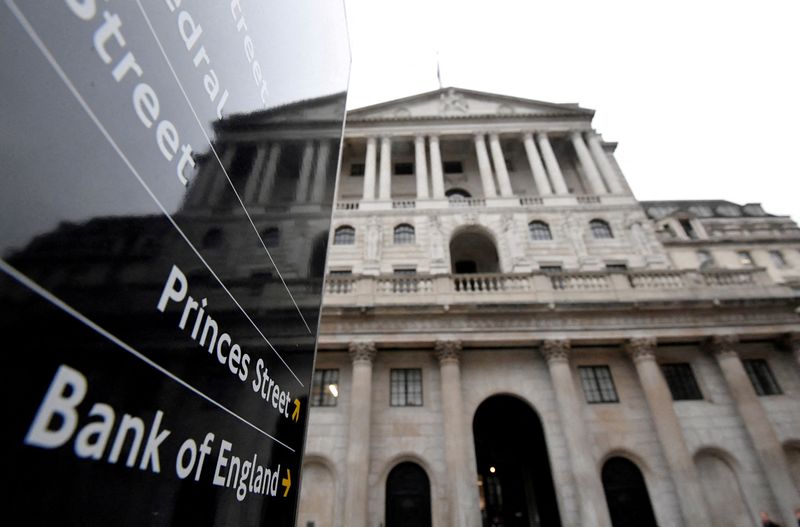By Peter Nurse
Investing.com - European stock markets are expected to open marginally higher Thursday, as investors cautiously await the Bank of England's latest policy-setting meeting as well as more quarterly corporate earnings.
At 02:00 AM ET (0600 GMT), the DAX futures contract in Germany traded 0.4% higher, CAC 40 futures in France climbed 0.1%, and the FTSE 100 futures contract in the U.K. also rose 0.1%.
European equities are expected Thursday to largely build on the previous session’s gains, helped by largely positive corporate earnings as well as a strong close on Wall Street after the U.S. ISM non-manufacturing purchasing managers index showed a surprise rebound in July, diluting fears of a recession.
However, gains are likely to be tepid with the Bank of England expected to raise interest rates by the most since 1995 later Thursday, as the central bank attempts to tackle inflation which hit 9.4% in June, a new 40-year high.
The BoE has already raised borrowing costs five times since December, and is widely expected to increase its benchmark rate by half a percentage point to 1.75%, its highest level since late 2008 at the start of the global financial crisis.
Elsewhere, the second-quarter earnings season continues in full flow.
Credit Agricole (EPA:CAGR) continued the strong run for Europe’s banks, announcing better-than-expected quarterly profits amid record activity in its investment banking division.
Agriculture and pharmaceuticals company Bayer (ETR:BAYGN) lifted its 2022 earnings guidance on strong demand for its seeds and crop chemicals and higher sales of consumer health products.
On the flip side, Adidas (ETR:ADSGN) said its operating profit fell by 28% in the second quarter despite rising sales, hit by the suspension of business in Russia, higher supply chain costs and COVID-19 lockdowns in China and Vietnam.
Lufthansa (ETR:LHAG) said it would offer only around 80% of pre-crisis passenger capacity in the third quarter, less than previously planned, amid staffing shortages at airports and airlines.
Oil prices edged lower Thursday, continuing the previous session’s sharp losses on the back of data suggesting weakening U.S. demand as well as a small output increase by OPEC+ producers.
Both benchmarks fell by around 4%, to their weakest levels since February, on Wednesday after data from the Energy Information Administration showed crude inventories rose 4.5 million barrels last week and gasoline stockpiles gained 200,000 barrels.
These increases in stocks could point to a weakening of demand in the world’s largest consumer, and are particularly noteworthy in the summer driving season.
Additionally, the Organization of Petroleum Exporting Countries and its allies, a group known as OPEC+, agreed to increase production by 100,000 barrels per day in September.
This small increase to the group's output target, equal to about 0.1% of global oil demand, followed the United States asking the group to boost output. But it’s unlikely to have much of an impact given demand forecasts continue to be revised lower, suggesting the global market will remain tight.
By 02:00 AM ET, U.S. crude futures traded 0.1% lower at $90.59 a barrel, while the Brent contract fell 0.2% to $96.56.
Additionally, gold futures rose 0.6% to $1,786.80/oz, while EUR/USD edged higher at 1.0165.
